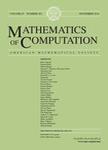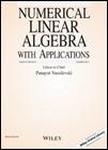版权所有:内蒙古大学图书馆 技术提供:维普资讯• 智图
内蒙古自治区呼和浩特市赛罕区大学西街235号 邮编: 010021
T=题名(书名、题名),A=作者(责任者),K=主题词,P=出版物名称,PU=出版社名称,O=机构(作者单位、学位授予单位、专利申请人),L=中图分类号,C=学科分类号,U=全部字段,Y=年(出版发行年、学位年度、标准发布年)
AND代表“并且”;OR代表“或者”;NOT代表“不包含”;(注意必须大写,运算符两边需空一格)
范例一:(K=图书馆学 OR K=情报学) AND A=范并思 AND Y=1982-2016
范例二:P=计算机应用与软件 AND (U=C++ OR U=Basic) NOT K=Visual AND Y=2011-2016









Get 10% off by pre-ordering this book.
This item has not yet published. Pre-order now and we will ship and process payment when the book becomes available.
To pre-order contact Customer Service:
800-447-SIAM (US & Canada)
215-382-9800 (outside US & Canada)
siambooks@***
Do not send credit card details via email.
Prices: List $48.60 / Member $34.02
Publishing May 2025
Matrix eigenvalue problems arise in a wide variety of fields in science and engineering, so it is important to have reliable and efficient methods for solving them. Of the methods devised, bulge-chasing algorithms, such as the famous qr and QZ algorithms, are the most important. This book focuses on pole-swapping algorithms, a new class of methods that are generalizations of bulge-chasing algorithms and a bit faster and more accurate owing to their inherent flexibility. The pole-swapping theory developed by the authors sheds light on the functioning of the whole class of algorithms, including qr and QZ.
Pole-Swapping algorithms for the Eigenvalue Problem
is the only book on the topic,
describes the state of the art on eigenvalue methods, and
provides an improved understanding and explanation of why these important algorithms work.
电话和邮箱必须正确填写,我们会与您联系确认。
版权所有:内蒙古大学图书馆 技术提供:维普资讯• 智图
内蒙古自治区呼和浩特市赛罕区大学西街235号 邮编: 010021

暂无评论